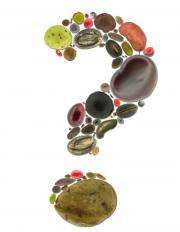Stress and trade-offs explain life's diversity: New model

Plants and people alike face critical choices as they reproduce: to make a few big, well-provisioned seeds--or babies--or many small, poorly-provisioned ones. Different species make strikingly different choices, resulting in a great diversity of life forms: Darwin's "endless forms most beautiful.
Helene Muller-Landau, staff scientist at the Smithsonian Tropical Research Institute argues that these diverse strategies coexist because different levels of stress favor different choices.
"I love to figure out the reasons behind patterns I see in the forest," said Muller-Landau, who, as head of the HSBC Climate Partnership's effort to quantify carbon in forests worldwide, has traveled to forests in China, Malaysia, Ecuador, Panama and beyond. "The mathematical model I've developed explains why different plant species have different size seeds, and may also provide insight into the variation in offspring size and provisioning among animal species."
Coconut palms produce enormous seeds while figs produce tiny seeds. Muller-Landau wasn't happy with the textbook explanation that a tradeoff between competitive ability and seed arrival at a site accounts for this range of seed sizes: "The standard explanation is that big seeds beat out small seeds everywhere that the big seeds arrive—but that just isn't always the case," she explains. "Big seeds don't necessarily do any better than small seeds when conditions are good. Where big seeds really have the advantage is in stressful conditions like shade or drought - small seeds often can't make it at all at stressful sites. In contrast, small-seeded species have an advantage at favorable sites, just because they've got more seeds in the game."
"This simple, elegant theory, so well grounded in sound natural history, reminds me of the glory days of Robert MacArthur. It is a considerable advance in our understanding of the contrast between fugitive ("r") and equilibrium ("K") species and how they coexist," said Egbert Leigh, Smithsonian staff scientist.
Muller-Landau will speak in Panama on March 1 at Taking Stock, a conference sponsored by the Smithsonian Tropical Research Institute's Center for Tropical Forest Science and Earthwatch as part of the HSBC Climate Partnership. The conference will highlight the role that citizen scientists play in the partnership in gathering vast quantities of tree growth data from more than 30, independent forest dynamics monitoring plots in 25 countries, worldwide---data needed to answer questions about climate change and to address very basic biological questions that are essential to understanding life on earth.
Her "tolerance-fecundity" model, will be presented in the Early Online edition of the Proceedings of the National Academy of Sciences during the week of February 15, Financial support from the HSBC Climate Partnership, a Packard Fellowship in Science and Engineering, the University of Minnesota and the U.S. National Science Foundation made this work possible.
More information: The tolerance-fecundity trade-off and the maintenance of diversity in seed size. Helene C. Muller-Landau. PNAS Early Online Edition. www.pnas.org/cgi/doi/pnas.0911637107
Provided by Smithsonian Tropical Research Institute

















